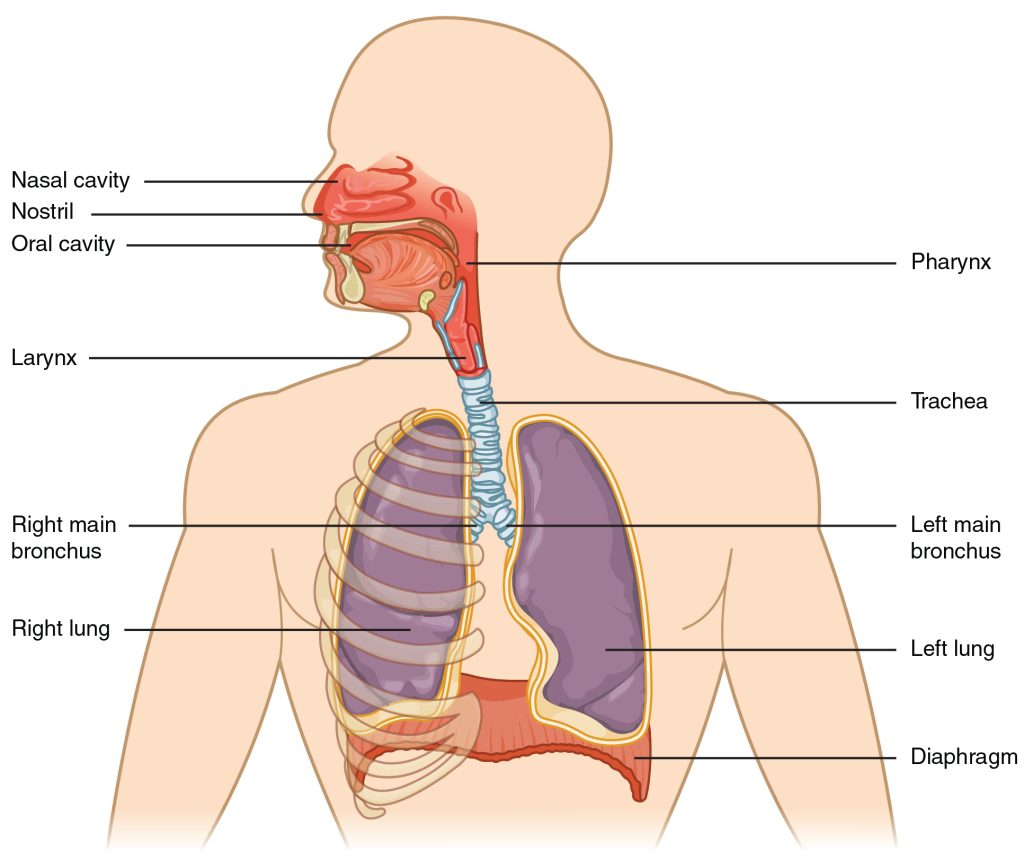4.1 Respiratory System Introduction
Learning Objectives
- Apply the rules of medical language to build, analyze, spell, pronounce, abbreviate, and define terms as they relate to the respiratory system
- Identify meanings of key word components of the respiratory system
- Categorize diagnostic, therapeutic, procedural, or anatomic terms related to the respiratory system
- Use terms related to the respiratory system
- Use terms related to the diseases and disorders of the respiratory system
Introduction to the Respiratory System
The primary function of the respiratory system is to provide oxygen to body tissues and to remove carbon dioxide. This chapter will begin by reviewing common word components related to the respiratory system that can be used to build definitions of respiratory terminology. Other respiratory terms, whose definitions cannot be easily built from word components, will be described in context based on the anatomy and physiology of the respiratory system, as well as common respiratory diseases and disorders. Medical specialists, diagnostic tests, procedures, and equipment related to the respiratory system will also be discussed.
View Figure 4.1[1] for an illustration of major anatomic structures of the respiratory system.

- “2301 Major Respiratory Organs.jpg” by OpenStax College is licensed under CC BY 3.0 ↵

